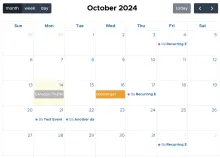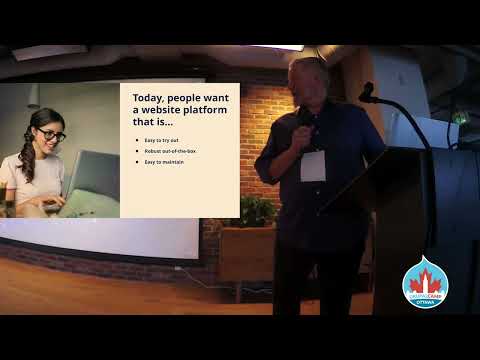As I made my way home from my first in-person DrupalCamp Asheville, I was still awash in warm memories of lively discussions and laughs with a Drupal community that increasingly feels like an extended family. I got to catch up with good friends I've known for years, and meet new people I hope to see again.
Drupal
Earlier this year I made the difficult decision to step down as Events Recipe track lead in the Starshot initiative. Having successfully delivered the requirements for a 1.0 release of Drupal CMS, I decided my skills and expertise could have more impact elsewhere.
I loved the opportunity to collaborate with so many of the best minds in the Drupal community. But there was important work needed on a different initiative, the Drupal Event Platform.
In my recent work on the Drupal Event Platform, one of the most ambitious changes has been changing the architecture to support multiple events. That means that an annual Drupal camp can retain the content of previous years while collecting session submissions for an upcoming event. It also means that the platform can support multiple events per year if needed, similar to events.drupal.org.
Since I started working on the Drupal Event Platform initiative, a request that I've heard more than once is for a configurable theme. I have considered making a subtheme of Olivero that would expand the number of configuration options available, to allow for more options in the overall site styling, potentially including things like spacing, border-widths, and border-radius.
In my last update about the Drupal CMS Events Recipe, I shared my concerns about the Fullcalendar View module, and in particular the move towards a paid model for sites to make use of commonly-requested features, even those that have seen patches posted by the community. This post will give a deeper dive on the progress to date, how the newer FullCalendar module compares, and a glimpse at the road ahead.
With DrupalCon Barcelona fast approaching I thought it was time to share some more updates on the progress of the events recipe for Drupal CMS a.k.a. the Starshot initiative.
When I first heard the vision for Starshot (now Drupal CMS), I knew exactly how I wanted to contribute. For years I have been working on trying to make it easier to quickly build Drupal sites following established best practices. I had been working on a set of modules I called Configuration Kits, but they were conceptually very similar to Recipes, albeit in a simpler (and less flexible) form.
Join us for an inspiring keynote as we explore the exciting opportunities within the Drupal community, ignited by the Starshot initiative announced at DrupalCon Portland. Whether or not you are a coder, there are countless ways to get involved and make a meaningful impact.
We will share practical tips for first-time contributors and showcase real-life examples from Martin's personal Drupal journey. Discover how he stays passionate and motivated, and learn how you can find your own unique path in the Drupal community.
Don’t miss this chance to embark on your Drupal adventure!
I just tagged the first stable release for Smart Date 4.1, a year (almost to the day) since the first stable release of Smart Date 4.0. A lot of work went into this new release, but I'm thankful beyond words to the many people who helped shape it into what it is today.
A recent analysis by the IMF estimates that 40% of jobs globally, or 60% of jobs in advanced economies, will be impacted by the growing adoption of AI. How will it impact your role? In my opinion the surest way to secure your place in these transformed economies will be by including AI in the toolset you use to stay competitive.








